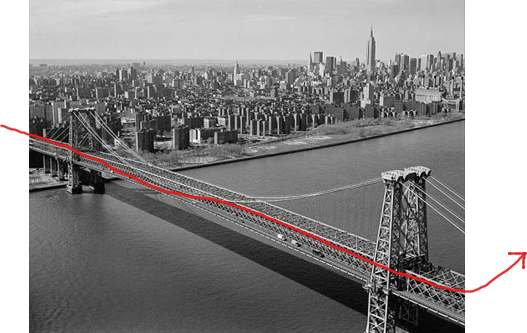Tango Dérive, Williamsburg Bridge

New York, New York , 9/16/07, Noon till 3pm
Action: 40+/- Tangueros dance 2.1 miles beginning at 12noon from the Tenement Musuem on the Lower East Side to Conflux Festival Headquarters at 84 Havemeyer Street, Williamsburg.
Dancers: Adriana Iamnitchi, Adriana Pegorer, Alex Orzeck-Byrnes, Andrea Katz, Angela Lochner, Anna Barnett, Annie France Von Arx, Barry Fellman, Blaise Cuff, Brooks Von Arx, Cassadra Hume, Claire Jervert, David Finlayson, David Reynaga, Deborah Delaney, Elena Potylitsine, Erik Hageman, Fayzah Chisholm, Gayle Madeira, George Liu, Jochem Schmidt, Lena Yip, Lexa Rosean, Loreen Arbus, Mary Kate Chillemi, Maryann Sallas, Patrick McShane, Paula Kay Lazrus, Rebecca Pawel, Robert Lawrence, Sarah La Rocca, Todd Carroll, Uri Lopetia, Yuri Okubo; and several others whose names I did not get (please let me know if your name is not here!).
Documentation: Anda Iamnitchi, Jennifer Poe, Preston Poe, Rachel Bishop, Robert Lawrence
Historical Context: In 1903 the Williamsburg bridge opened a gateway from the Lower East Side to Williamsburg. At that time the Lower East Side tenements were among the most densely packed housing units in the world. When the bridge opened the block that contained 97 Orchard Street (where the Tenement Museum now is) was home to 2,200 residents, the densest concentration in New York City. The vast majority of residents in this area were struggling immigrants and the living conditions were deplorable. When the bridge opened immigrants poured across in a major immigrant "re-migration" to the relatively open and considerably more wealthy Williamsburg. At the time Williamsburg was home to such rich families as the Vanderbilts, Whitneys and the Fisks. Jewish and Italian immigrants walked across the longest bridge in the world to a new life across the East River. Within a few decades this influx along with continuing new immigration made areas of Williamsburg the most densely populated places in America.
In the decades that followed a number of social and economic forces steadily eroded the standard of living in the area. Relative to Manhattan land values and the cost of living became extremely low. This created optimal conditions for a second "migration" beginning in the 70's and accelerating in the 80's and 90's. Artists and others who needed to be near the city but could not afford the price of space there moved into disused and abandoned buildings in Williamsburg. This of course precipitated a massive inflation of property values, that by now has effectively eliminated the very conditions that brought both the Manhattan transplants and foreign immigrants to the area. Williamsburg is again home to a demo of Vanderbilts, Whitneys and Fisks. Hence, propelled by the economic forces beyond the control of individuals, the migrations continue.
Tango is born and shaped by the forces of migration and re-migration. It was conceived in the rich soup of creole mixes that followed colonialism, and since then it has been groomed by the cultural hybridity of historical and contemporary globalization. There is a way of looking at this social dance where you can see clearly that every step, every gesture, every note is informed by these historical, political and economic forces beyond the control of individuals. Simultaneously it is also an intimate conversation between two individuals, and a path created between the past and the future.
"Tango Dérive, Williamsburg Bridge" is a tribute to all those who made their crossing—whether on foot, carrying a chicken and leading a goat in 1903, or on the J train with cardboard boxes full of tubes of paint and brushes in 1983.
For documentation of event please visit:
